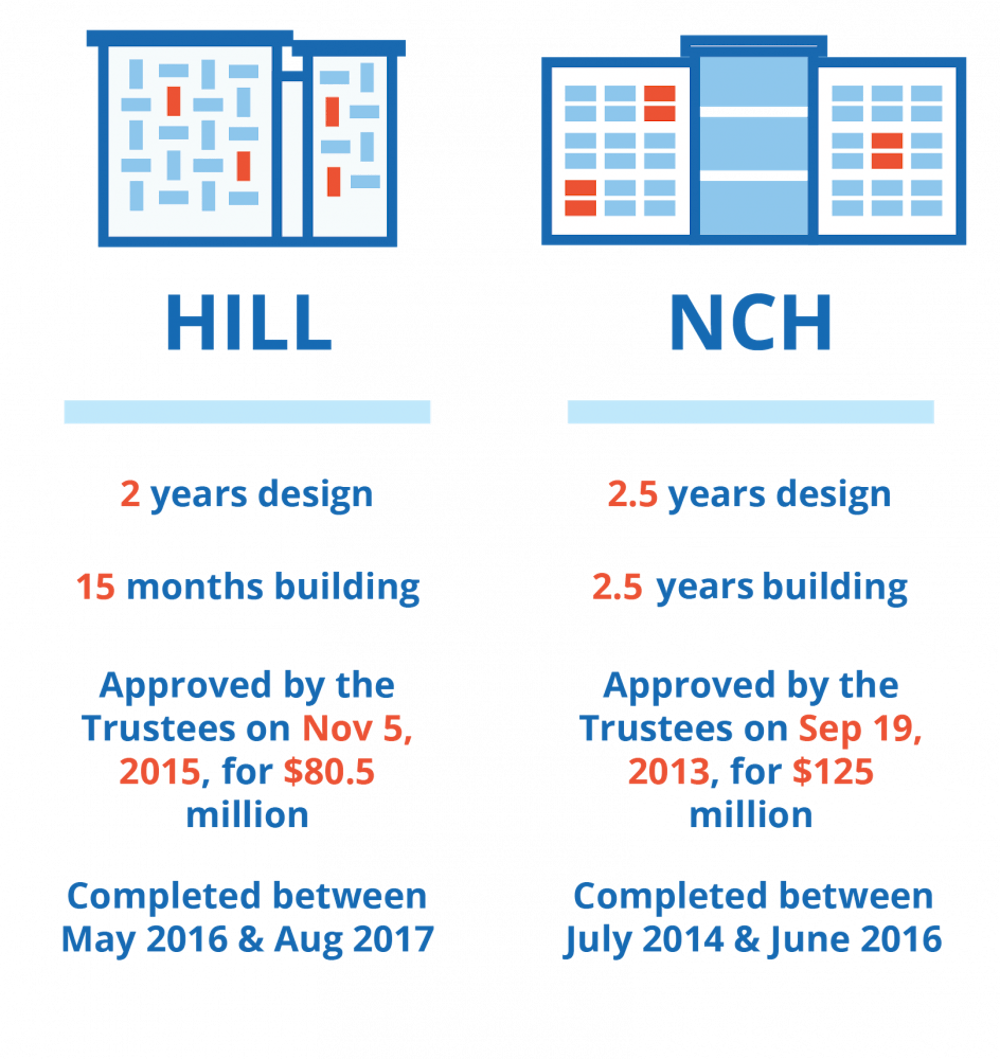
Hill College House was constructed 57 years ago as a women's-only dorm on Hill Field at the southeast corner of campus.
The now co-ed dorm re-opened after spending a year undergoing multi-million dollar renovations to share its field with the one year-old New College House.
In May 2016, Penn began 15 months of renovations to modernize the 550-bed Hill, which The New York Times named in 2015 as one of the top five worst college dorms.
Executive Director of Business Services Doug Berger said it is important to take the NYT's poor ranking of Hill with a grain of salt.
“Those were more maintenance and pest control issues that were being complained about," Berger said. "The building was old and did need work."
Hill's renovation was the first time the University had closed a dorm for construction during the school year. In the past, renovations of residential buildings would only occur during the summer because there would not have been enough space to house students during the year.
The last major residential renovation was for the three high rise buildings — Harnwell College House, Rodin College House and Harrison College House — and began in the summer of 2002 and cost $80 million. The Quad also underwent renovations during the summer of 2000 and lasted nearly four summers.

During the time Hill was undergoing renovations, Penn strategically built NCH to compensate for the decrease of available freshman housing in the two years before Hill was set to close down. The 350-bed, four-year dormitory was home to only freshmen last year, which Director of Design and Construction Mariette Buchman said was “unusual."
According to Berger, the process of upgrading or constructing a residential building involves communication between Penn's upper administration, Facilities and Real Estate Services and the University Board of Trustees in order to determine which buildings require safety and facilities updates.
NCH, which was the first college house constructed at Penn in over 40 years, was approved by the Board of Trustees in September 2013 with a $125 million budget. Hill's renovations were approved by the Board of Trustees in November 2015 with an $80.5 million budget.
“There is no concern about the modest overlapping schedules of timing and cash flow related to The New College House and Hill College House,” Executive Vice President Craig Carnaroli said in an emailed statement to The Daily Pennsylvanian.
Since 2004, Penn has invested $425 million in residential services, which has included updates such as including fire sprinklers in every dorm.
The actual creation process for NCH lasted five years and began when the Office of the University Architect launched a competitive search for architect and construction companies.
Two and a half years later, as the designs for NCH neared completion, a similar search for architect and construction companies for Hill launched.
Although the two buildings were designed by different companies, they were both constructed by InTech Construction, which renovated the high rises and built The Radian.
Berger said the community fostered by Hill, as revealed by student surveys indicating it had the “best social experience of any of our College Houses," inspired the creation of similar spaces in NCH.
“The students’ experience at Hill and other facilities definitely informed the design of New College House's social spaces,” Buchman said.
She said the student surveys of last year’s freshmen experience in NCH were not available yet.
“Renovation cycles are an ongoing process, they’re never done,” Berger said. “It’s a question of what we need to do next.”
The Daily Pennsylvanian is an independent, student-run newspaper. Please consider making a donation to support the coverage that shapes the University. Your generosity ensures a future of strong journalism at Penn.
Donate




